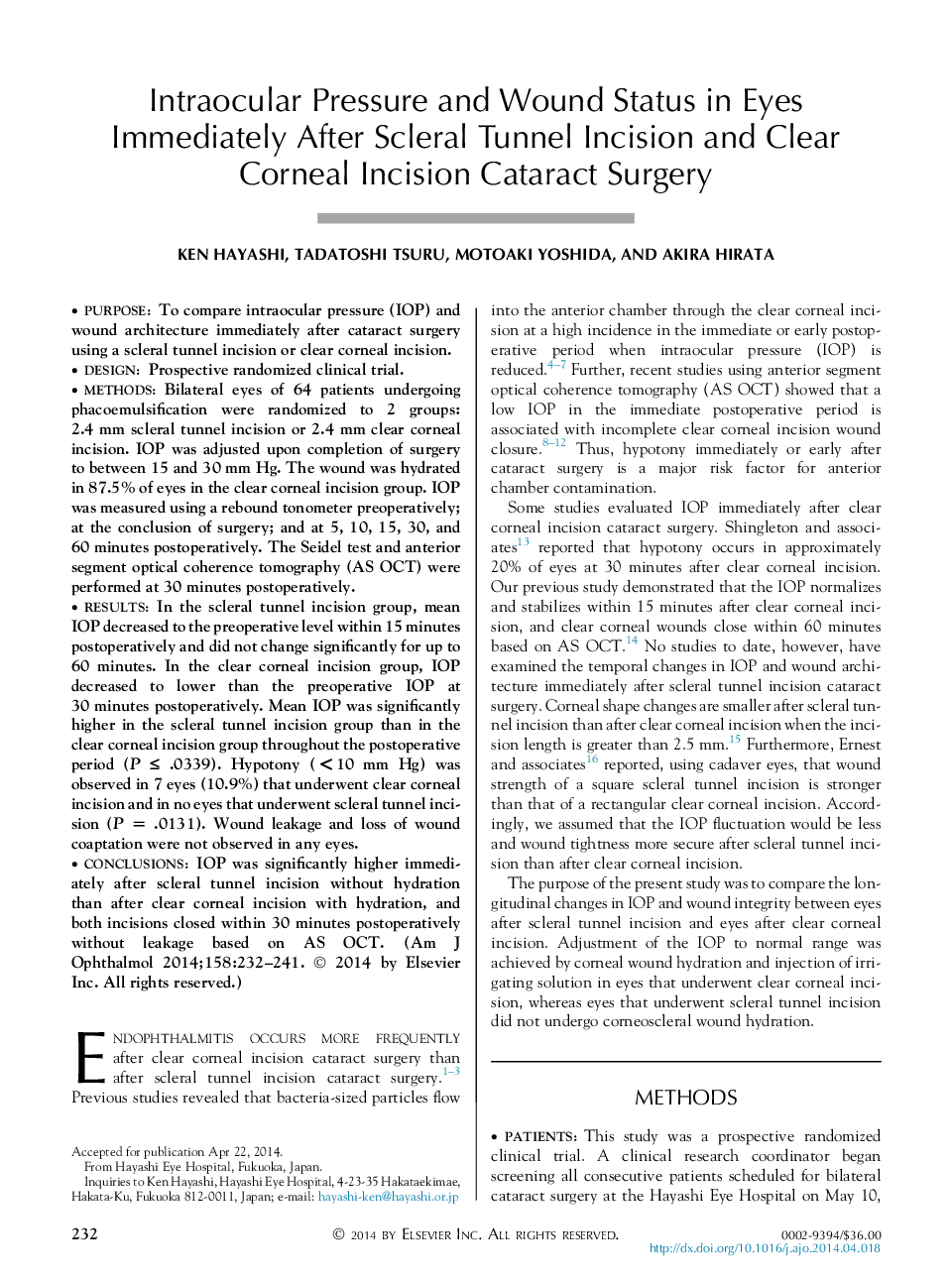| Article ID | Journal | Published Year | Pages | File Type |
|---|---|---|---|---|
| 4002077 | American Journal of Ophthalmology | 2014 | 10 Pages |
PurposeTo compare intraocular pressure (IOP) and wound architecture immediately after cataract surgery using a scleral tunnel incision or clear corneal incision.DesignProspective randomized clinical trial.MethodsBilateral eyes of 64 patients undergoing phacoemulsification were randomized to 2 groups: 2.4 mm scleral tunnel incision or 2.4 mm clear corneal incision. IOP was adjusted upon completion of surgery to between 15 and 30 mm Hg. The wound was hydrated in 87.5% of eyes in the clear corneal incision group. IOP was measured using a rebound tonometer preoperatively; at the conclusion of surgery; and at 5, 10, 15, 30, and 60 minutes postoperatively. The Seidel test and anterior segment optical coherence tomography (AS OCT) were performed at 30 minutes postoperatively.ResultsIn the scleral tunnel incision group, mean IOP decreased to the preoperative level within 15 minutes postoperatively and did not change significantly for up to 60 minutes. In the clear corneal incision group, IOP decreased to lower than the preoperative IOP at 30 minutes postoperatively. Mean IOP was significantly higher in the scleral tunnel incision group than in the clear corneal incision group throughout the postoperative period (P ≤ .0339). Hypotony (<10 mm Hg) was observed in 7 eyes (10.9%) that underwent clear corneal incision and in no eyes that underwent scleral tunnel incision (P = .0131). Wound leakage and loss of wound coaptation were not observed in any eyes.ConclusionsIOP was significantly higher immediately after scleral tunnel incision without hydration than after clear corneal incision with hydration, and both incisions closed within 30 minutes postoperatively without leakage based on AS OCT.
